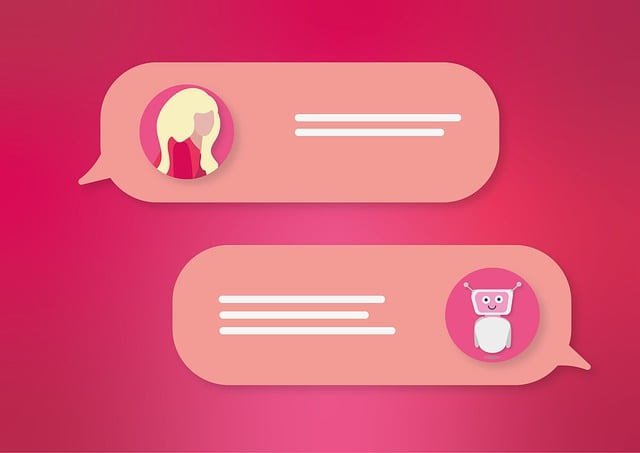AI chatbots online have transformed digital interactions through natural language processing (NLP) and machine learning (ML). Their development involves defining purpose, target audience, and choosing suitable tools like Dialogflow or TensorFlow. Effective conversational flows and well-prepared training data are crucial for success. Iterative implementation, testing, and refining ensure accuracy and user satisfaction. By catering to diverse needs and continuously improving, AI chatbots online deliver engaging, personalized experiences.
Building a scripted AI chatbot is an exciting journey into the future of customer engagement. In today’s digital era, AI chatbots are transforming how businesses interact with their customers. This comprehensive guide takes you step by step through the process of creating your own virtual assistant. From understanding the fundamentals of AI technology to defining your chatbot’s role and selecting the right tools, you’ll learn how to design engaging conversations, prepare training data, and implement a robust AI chatbot that delivers exceptional user experiences online.
- Understanding AI Chatbot Technology: A Foundation for Building
- Defining Your Chatbot's Purpose and Target Audience
- Choosing the Right Tools and Platforms for Development
- Designing Conversational Flows and Training Data Preparation
- Implementing, Testing, and Continuously Improving Your Scripted AI Chatbot
Understanding AI Chatbot Technology: A Foundation for Building

AI chatbot technology has revolutionized how we interact with digital assistants and customer service platforms, offering a more natural and engaging conversation experience. Understanding the fundamentals of AI chatbots is essential for building effective scripted versions. These virtual agents utilize Natural Language Processing (NLP) and Machine Learning (ML) algorithms to interpret user queries and generate contextually relevant responses.
By learning about conversational AI, developers can create sophisticated scripts that guide users through a dialogue. This involves designing intent recognition models to understand user intents, entity extraction for contextual details, and response generation strategies to provide accurate, personalized answers. With these technologies in place, ai chatbots online can handle a wide range of tasks, from providing simple information to performing complex actions, all while maintaining a human-like conversation flow.
Defining Your Chatbot's Purpose and Target Audience

When building an AI chatbot, defining its purpose and target audience is a crucial first step. Understanding your chatbot’s intended role will shape its design, functionality, and conversational abilities. Are you creating an ai chatbot online to offer customer support, educate users, or entertain? Each of these purposes requires different interactions and knowledge bases. Moreover, identifying your target audience—be it general users, professionals in a specific field, or customers with particular needs—helps tailor responses and language used.
Consider the demographics, interests, and pain points of your intended users. For example, a chatbot designed for young adults seeking fashion advice will need a different vocabulary and tone than one aimed at medical professionals. This step ensures your AI chatbot online is not only effective but also engaging, providing a personalized experience that meets its audience’s unique requirements.
Choosing the Right Tools and Platforms for Development

When it comes to developing an AI chatbot, choosing the right tools and platforms is a critical step. The availability of numerous options in the market can make this task both exciting and challenging. For instance, popular choices include Dialogflow (formerly known as API.AI), IBM Watson Assistant, Microsoft Bot Framework, and Rasa. Each platform offers unique features tailored to different development needs, from intuitive drag-and-drop interfaces for beginners to advanced code customization for experienced developers.
Consider your chatbot’s complexity and your team’s technical expertise when making this decision. For simple, rule-based bots, platforms with visual conversational flows might be sufficient. However, if you’re building a sophisticated AI chatbot that requires natural language processing (NLP) capabilities and machine learning algorithms, specialized development kits like TensorFlow or PyTorch could be more suitable. Moreover, cloud-based solutions from major tech giants provide scalable infrastructure for handling high user volumes, ensuring your online AI chatbot performs optimally under all conditions.
Designing Conversational Flows and Training Data Preparation

Designing effective conversational flows is a key aspect in building successful AI chatbots. It involves crafting natural, intuitive dialogues that cater to user needs. Start by mapping out potential user queries and desired responses, creating branching conversations based on context and user input. This process, often referred to as dialogue tree or flow design, ensures the chatbot guides users through relevant topics, offering accurate information or assistance.
Training data preparation is another critical step. High-quality training involves curating a diverse dataset that represents real-world user interactions. This includes gathering various types of queries, ensuring coverage of common and edge cases. The data should be meticulously annotated to teach the AI chatbot context, intent, and appropriate responses. For online ai chatbots, this preparation is essential to deliver accurate, engaging conversations, enhancing user satisfaction and fostering meaningful interactions.
Implementing, Testing, and Continuously Improving Your Scripted AI Chatbot

Implementing, testing, and refining your scripted AI chatbot is an iterative process that’s key to success in the realm of ai chatbots online. Once you’ve crafted engaging scripts and integrated them into your chatbot platform, thorough testing becomes non-negotiable. This involves simulating various user interactions and scenarios to identify areas where the chatbot may falter or provide inaccurate responses. Leveraging tools that enable logging and analyzing chatbot conversations is crucial during this phase.
Continuous improvement is at the heart of maintaining a robust ai chatbots online experience. Regularly review conversation logs, user feedback, and analytics to pinpoint patterns and common issues. Use these insights to refine scripts, expand knowledge bases, or retrain models, ensuring your chatbot remains sharp, accurate, and aligned with user expectations. This ongoing process not only enhances the quality of interactions but also fosters a dynamic and ever-evolving conversational AI experience.
Building a scripted AI chatbot is an exciting journey that involves understanding technology, defining purpose, choosing the right tools, designing engaging conversations, and continuous improvement. By mastering these steps, you can create an effective AI chatbot that enhances user experiences across various online platforms, revolutionizing customer service and interaction. Whether for support, education, or entertainment, ai chatbots are transforming the way we communicate and engage with technology.
